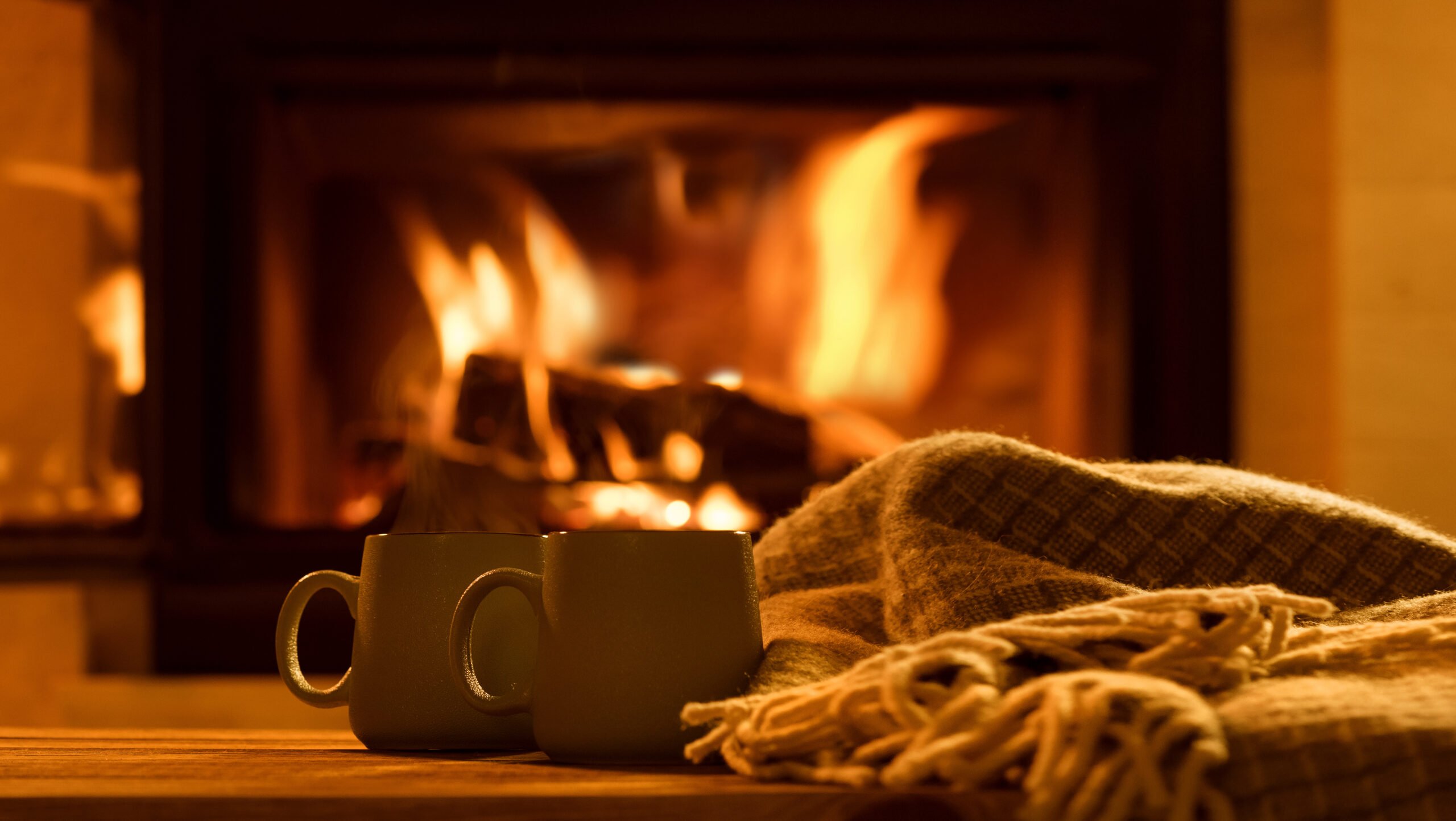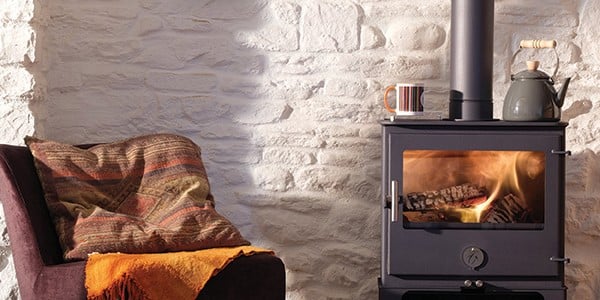6 log burner rules – and why they’re easy to follow
If you’ve got a log burner or you’re thinking about buying one and staying cosy at home using sustainably sourced fuel, you have probably heard that there are a few rules about what you can and can’t do.
From what you’re allowed to burn and where you can own a log burner to who is legally allowed to install it, it can seem a bit overwhelming at times. These rules exist to improve air quality across the UK, keep households safe, and make sure you are getting the most heat per log – and are remarkably easy to follow.
In reality, most stove owners are already following these rules without even knowing it – they’re just common sense.
We’ve broken down six of the rules you will have heard about the most, just to show you that they’re nothing to worry about if you’re burning responsibly – you’re probably already following them.
Smoke Control Areas (SCAs)
Many urban areas across England have been designated as Smoke Control Areas (SCAs) under the Clean Air Act 1993. In SCAs, you are only allowed to burn wood (classed as an ‘unauthorised fuel’) in an exempt appliance, and it is an offence to emit smoke from your chimney.
Who this impacts:
This impacts anyone living in a SCA, which are primarily cities and towns across England. Find out if you live in a SCA in the government’s official map.
What it means:
You can only burn wood in an exempt appliance – if your appliance is not on this list, you may only burn smokeless fuels.
You must also not emit visible smoke from your chimney when burning.
Why it’s easy to follow:
If you are using a modern stove, it is likely that your appliance is on the exempt list – all Cleaner Choice appliances are, and are tested to emit at least 50% less emissions than required in SCAs.
Burning Ready to Burn certified fuel responsibly and following our top tips will make all the smoke get burned up in your stove – stopping any from coming out of your chimney. If smoke comes out of your chimney when you are burning, you are doing something wrong, or your installation needs to be inspected by a professional.
Ready to Burn regulations
Since 1 May 2021, all wood sold in volumes under 2m³ must be certified as Ready to Burn in England. This means the wood is verified as having a moisture content of 20% or less, making it safe to burn in your log burner.
Smokeless fuels (also known as manufactured solid fuels) are also included in the regulation, and most meet stringent emission and sulphur content standards.
Who this impacts:
Anyone buying firewood or solid fuels to burn in their stove in England. Scotland, Wales, and Northern Ireland currently do not have this regulation in place.
What it means:
All sellers should display the Ready to Burn mark on their firewood bags to show evidence their wood is safe to burn.
Why it’s easy to follow:
If you’re already getting your wood from a trusted supplier – such as a Woodsure assured supplier – you will have already been buying quality, safe-to-burn wood for several years. If you source your own wood, you’ll just need to check its moisture content using a moisture meter.
Competent person sign-off
Getting a stove installed will require it to be notified to your local authority. Using a registrant of a competent person scheme – such as a HETAS Registered Installer – means they have undergone the training and have the expertise to safely install your stove and sign the installation off themselves, making sure you have all the right paperwork.
Who this impacts:
Anyone looking to get a log burner installed in their home.
What it means:
Building regulations need to be met – this can be achieved through trusting a professional such as a HETAS Registered Installer to fit your log burner.
Why it’s easy to follow:
Using a HETAS Registered Installer makes sure your installation is safe and compliant. They have the knowledge to safely install your log burner and notify your local authority, so all you need to do is sit back and relax in front of your professionally installed wood burner.
Ecodesign regulations
From January 1 2022, all stoves sold in the UK must meet Ecodesign standards – requiring lower emissions and higher efficiency. This means that any stove placed on the market since this date must meet the limits set out in the regulation.
Who this impacts:
Anyone buying a new stove since January 1 2022.
What it means:
Manufacturers and retailers must only sell stoves that meet Ecodesign standards.
Why it’s easy to follow:
If you have bought a stove recently, your local retailer or installer will have made sure it met regulations, so your stove will be Ecodesign-compliant.
If you have an older stove, HETAS recommends you look at getting an upgrade – Cleaner Choice certified appliances are all guaranteed to go above and beyond current requirements in the UK, giving you a cleaner, safer burn.
Ban on coal
Looking to the past, a fireplace burning coal evokes a cosy, warming feeling and is something seen time and time again across films, TV shows, and books. However, since 1 May 2022, the sale of traditional house coal has been banned in England due to the large amount of emissions it produces when burned.
Smokeless fuel – also known as manufactured solid fuel – look similar to coal, but are in fact much more environmentally friendly and, like firewood, must meet strict emissions standards to be legally sold in England.
Who it impacts:
Anyone looking to burn coal in their fireplace.
What it means:
Traditional house coal can no longer legally be sold in England. Alternatives must be used instead, and these alternatives must have the Ready to Burn certification mark for manufactured solid fuels.
Why it’s easy to follow:
Modern log burners are not designed to burn coal, so trying to burn coal in your stove would damage it and cost you up to thousands of pounds to replace.
Responsible stove owners will have switched to wood or smokeless fuels a while ago –they are better for your stove, your health, and the environment.
Carbon monoxide alarm requirements
All log burner and multifuel stove installations must have a working carbon monoxide (CO) alarm appropriately placed in the room.
CO is a silent killer – it can’t be seen, smelled, or tasted, so it is vital that one is present. There are differing rules depending on if you are in England and Scotland or Wales, but your HETAS Registered Installer will be aware of what is required by Building Regulations and the safe placement of a CO alarm.
Who it impacts:
Anyone with a log burner or multifuel stove.
What it means:
Building Regulations require a working CO alarm to be present (varying requirements across England, Scotland, and Wales).
Why it’s easy to follow:
Your HETAS Registered Installer will make sure you not only have a working CO alarm fitted when they complete the job, they will also make sure it is positioned correctly. Make sure you regularly test your alarm and follow the manufacturer’s instructions to stay safe – it could save your life.
If you’re a responsible stove owner using the correct fuel, you regularly maintain your installation, and burn responsibly, chances are you are already ticking all the boxes without even realising it.
These rules and regulations exist to protect you, your home, and our environment – and they are all common sense for seasoned burners, so it’s likely you have been following them every time you light your fire and cosy up by your log burner.
The HETAS Advice Hub has a range of tips and advice to ensure you can continue to burn safely and responsibly.



